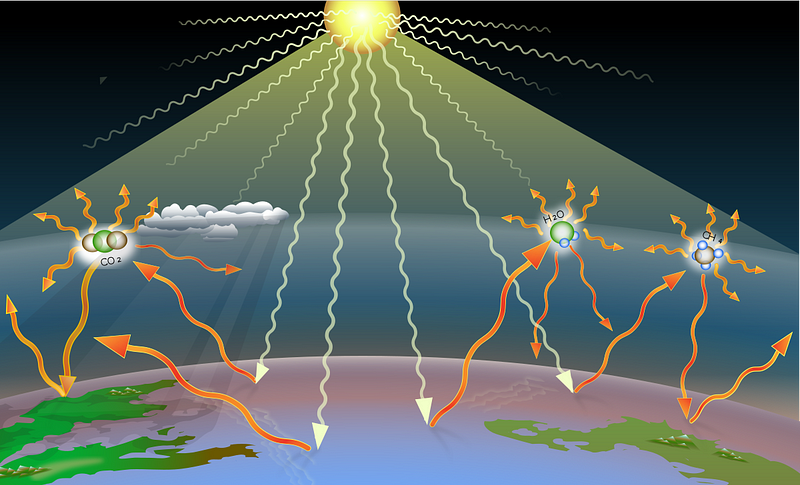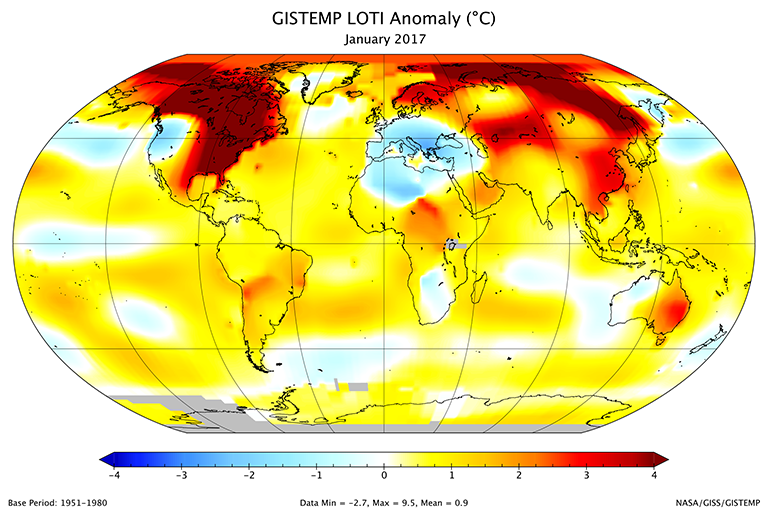Svante Arrhenius: The Pioneer Who Anticipated Global Warming
Written on
The Birth of Modern Climate Science
In the late 1890s, Swedish chemist Svante Arrhenius faced personal turmoil following his separation from his first wife. To cope with his emotional distress, he devoted his efforts to investigating the impact of carbon dioxide on Earth's temperature regulation. During this exploration, he recognized that emissions from factories could have a substantial effect on the climate, effectively suggesting that human activities could lead to global warming. Remarkably, Arrhenius accomplished this without the aid of computers; his tools were merely paper, a pencil, and his mathematical prowess. But how did he manage to model climate change so effectively in the 1890s?
Arrhenius was not the first to ponder the atmospheric influences on Earth's temperature. Preceding scientists had already established that temperature is determined by the balance between incoming solar energy and outgoing infrared radiation. They also understood that gases such as water vapor and CO2 played a crucial role in absorbing the infrared radiation emitted from the Earth's surface, thus trapping heat. Arrhenius labeled these gases as "hothouse gases," which we now refer to as greenhouse gases.
Accomplished in the rapidly evolving field of physical chemistry, Arrhenius had previously examined the behavior of ions in solution and the principles of activation energy. He remains well-regarded in chemistry for formulating the Arrhenius equation, which models reaction rates as a function of temperature. His extensive background in radiation absorption and temperature modeling, combined with his strong mathematical skills, enabled him to construct a more precise quantitative model.
Arrhenius speculated that greenhouse gases might explain the occurrence of ice ages. While water vapor is a significant factor due to its heat-retaining properties, its constant recycling in the atmosphere necessitated another element influencing its levels. He believed that CO2 was this factor and conducted detailed calculations to demonstrate how rising CO2 concentrations could create a chain reaction that would retain more water vapor in the atmosphere, consequently warming the planet. He noted, “if the quantity of carbonic acid increases in geometric progression, the augmentation of the temperature will increase nearly in arithmetic progression.” In simpler terms, this means that doubling atmospheric CO2 levels would raise temperatures by a specific amount, while halving them would lower temperatures by a similar degree. Essentially, carbon dioxide acts as a 'control knob' for temperature regulation, both by absorbing heat and by affecting water vapor levels.

Arrhenius didn't stop at theorizing CO2's role in ice ages; he also predicted that human-generated CO2 would eventually lead to climate warming. He estimated that about 500 years of fuel combustion would result in a temperature increase of approximately 4 degrees Celsius. Although he underestimated the rapid escalation of human activity in the years to come, he was groundbreaking in proposing that human actions could influence global temperatures.
Interestingly, Arrhenius was not alarmed by the prospect of global warming; rather, he viewed it with optimism. He expressed hope that an increase in atmospheric carbonic acid could lead to more temperate and favorable climates, particularly in colder regions, allowing for more abundant crop yields to support a growing population.
While his optimism can be understood—especially considering Sweden's climate might seem more inviting with a slight temperature rise—our understanding of temperature's effects on life on Earth has evolved significantly since his time. Numerous feedback mechanisms, such as oceanic CO2 solubility and albedo variations between ice and land, have been discovered. Although Arrhenius' original equations may not be entirely accurate today, they laid a foundational theoretical framework for understanding CO2's influence on surface temperatures.

Today, advanced technology, including computers and satellites, enables us to analyze vast amounts of climate data and make remarkably accurate forecasts about future climate behavior. The methodologies we utilize now stem from the same scientific principles that Arrhenius applied over a century ago. His journey exemplifies how significant insights can emerge even from modest beginnings, provided the right questions are asked.
The first video, "Three pioneers who predicted climate change | BBC Ideas," explores the groundbreaking contributions of various scientists, including Arrhenius, who foresaw the impacts of climate change long before it became a widely recognized concern.
The second video, "Global Warming: Fact or Fiction? Featuring Physicists Willie Soon and Elliott D. Bloom," delves into the scientific debate surrounding global warming, examining evidence and arguments from both sides of the discussion.
References:
- Svante Arrhenius, the Man Who Foresaw Climate Change | OpenMind
- Svante Arrhenius and the Greenhouse Effect on JSTOR